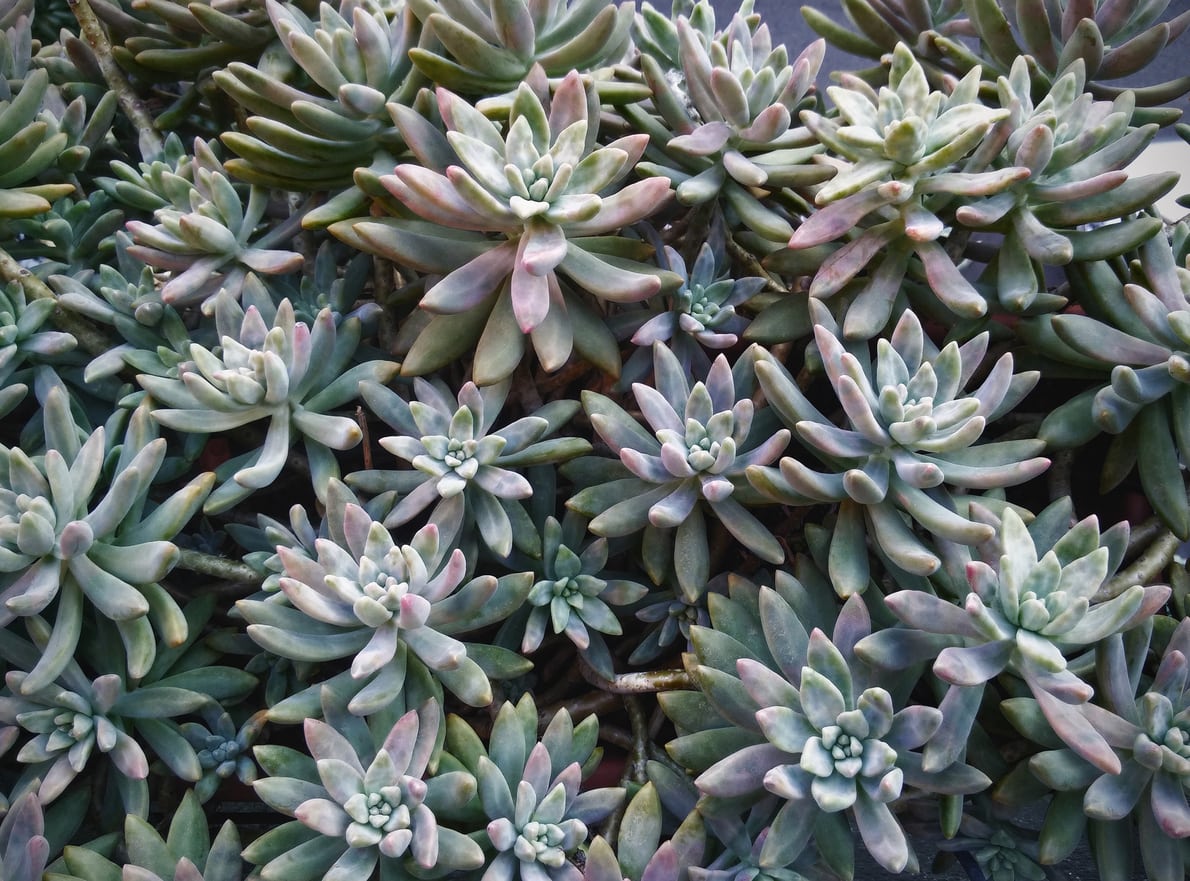Pachyveria ‘Little Jewel’ – Learn About Growing A Little Jewel Succulent

Succulent gardens are all the rage and it’s really no wonder with the myriad of sizes, shapes, and colors available. That and succulents are easy-care plants that require little water. If you’re overwhelmed with all the choices, try growing a ‘Little Jewel’ succulent plant. Pachyveria ‘Little Jewel’ is an adorable succulent perfect for dish gardens or rock gardens. Read on to find out how to grow and care for Little Jewel succulents.
What is Pachyveria ‘Little Jewel’
Pachyveria glauca 'Little Jewel' succulent plants are hybrid perennials. They form spiky rosettes composed of tapered, thick, cylindrical leaves that are a dusky, powdered blue tipped with red and violet hues. The shape and colors of Little Jewel really does remind one of small faceted gemstones. Even more so in the winter when Little Jewel blossoms with melon colored flowers. These little beauties are suited for growing in a rock garden or miniature succulent garden, either as part of a xeriscape landscape or as a houseplant. At maturity, the plants only attain heights of about 3 inches (8 cm.).
Growing a Little Jewel Succulent
For optimal Little Jewel succulent care, grow this succulent as you would any other succulent, in bright light to full sun in well-draining cactus/succulent soil. Little Jewel succulents are hardy to USDA zones 9b, or 25 to 30 degrees F. (-4 to -1 C.). They should be protected from frost if grown outside. Water sparingly but when you do, water it well and then wait until the soil is completely dry to the touch before watering again. Remember that succulents hold water in their leaves so they don’t need as much as the average houseplant. In fact, overwatering is the number one problem when growing succulents. Overwatering can lead to rot as well as pest infestations.
Sign up for the Gardening Know How newsletter today and receive a free copy of our e-book "How to Grow Delicious Tomatoes".

Amy Grant has been gardening for 30 years and writing for 15. A professional chef and caterer, Amy's area of expertise is culinary gardening.
